This was published 8 months ago
How a change in the description of a coastal town will cost a state $200 million
By Shane Wright
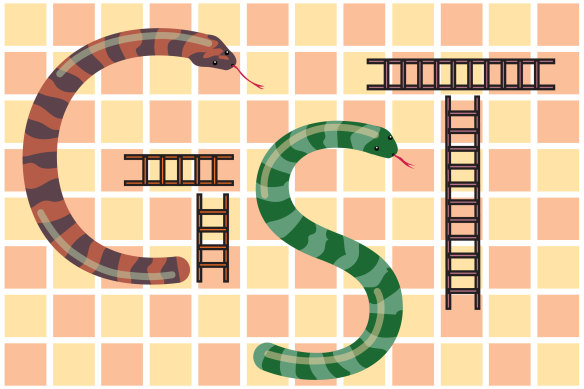
The way GST is distributed to the states is complex and befuddling.Credit: Matt Davidson
The NSW Mid North Coast holiday centre of Coffs Harbour has, apparently, moved – at a huge cost to the state’s taxpayers.
The Commonwealth Grants Commission, in its annual carve-up of the $90 billion GST pool this week, ruled that Coffs Harbour and its surrounding satellite towns and villages were no longer “outer regional”.
It is now a part of “inner regional” Australia.
While the earth didn’t move for the almost 80,000 people living around the home of the Big Banana, that single definitional change cost the NSW government more than $200 million in GST.
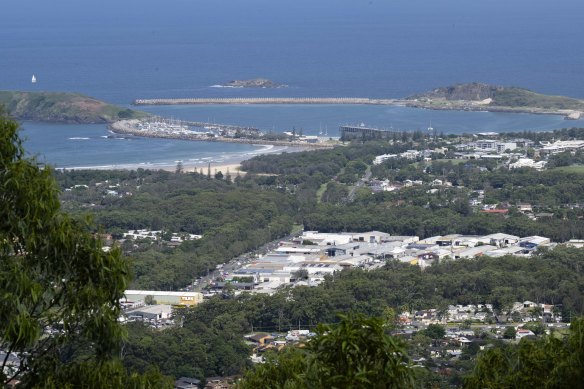
A change in the definition of Coffs Harbour has cost the NSW government $200 million in lost GST.Credit: Janie Barrett
In the nation’s south, the towns of Mount Gambier in South Australia and the Tasmania north-coast centre of Devonport were reclassified from “inner regional” communities to “outer regional”.
Again, neither town physically moved, but the description change meant extra GST for SA and Tasmania under the grants commission process.
NSW Treasurer Daniel Mookhey says the fact a state can lose hundreds of millions of dollars simply because of a change in a town’s description showed the grants commission system was broken.
“Coffs Harbour has been in the same place for more than a century, yet somehow it’s gone from being outer regional to inner regional and it’s costing us millions,” he said.
Usually, the release of the grants commission’s annual carve-up of the GST grabs the interest of a few Treasury officials and a couple of treasurers.
But this week’s report on how the $90 billion will be shared in 2024-25 has started a nationwide debate, pitting state Labor treasurer against state Labor treasurer.
After years of gripes by Western Australia about the process, NSW and Queensland are on the fiscal warpath with the Commonwealth Grants Commission straining to breaking point.
The commission, put in place by then-prime minister Joe Lyons in 1933 after West Australians voted to secede because of claimed financial injustice, tries to allocate the GST so that every state and territory can offer reasonably similar standards of goods and services to their citizens.
Its processes consider a wide array of factors that stretch from the number of Indigenous people in a country town to the cost of natural disasters.
The proportion of a state’s population in a remote or regional area, and their relative distance from their capital city, is also taken into account.
That is how parts of a state are defined, via a process overseen by the Australian Bureau of Statistics, that led to the Coffs Harbour, Devonport and Mount Gambier changes.
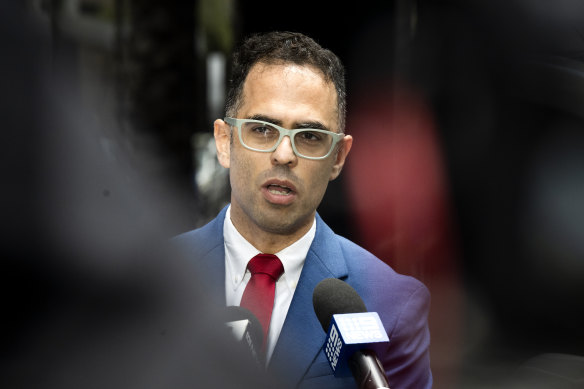
NSW Treasurer Daniel Mookhey and other state treasurers believe there are huge problems with the GST system.Credit: Louise Kennerley
Based on the bureau’s data, the population of Coffs Harbour and its hinterland grew enough between the census of 2016 and 2021 to reduce its “relative distance” from Sydney and its services for it to be described as an inner regional area in a $200 million hit to the NSW budget.
But Devonport, whose population grew almost as fast as Coffs Harbour, went from an inner to outer regional area – a definition that helped boost Tasmania’s share of GST by $49 million.
Victoria gained an extra $702 million due to revisions by the commission of Melbourne, finding more multi-storey buildings in areas along key transport links qualified the state for extra GST to cover the cost of servicing urban centres.
The ownership of an asset can also change a state’s share of GST. In 2021, the then NSW government sold its remaining 49 per cent share of the huge WestConnex motorway project. That shift in ownership, from public to private, affected state property values to such an extent that NSW gained $219 million in GST.
Vladimir Putin’s invasion of Ukraine in February 2022 drove the price of a tonne of coking coal from around $US140 to a peak of $US432, delivering a multi-billion windfall to the coal-exporting states of Queensland and NSW. The grants commission took most of that windfall away.
In a repeat of what happened to Western Australia as a surge in iron ore prices delivered a huge increase in royalties, the commission process spreads the windfall gain of one state to the others.
NSW lost $872 million in GST and Queensland $1.7 billion due to the coal price surge. The winners from Russia’s war were WA (up $608 million) and Victoria ($1.3 billion).
While there are always shifts in states’ GST shares, the 2024-25 changes were particularly large and unexpected. This caused the anger emanating from NSW and Queensland, and Victoria’s glee given it received the largest upward gain in two decades.
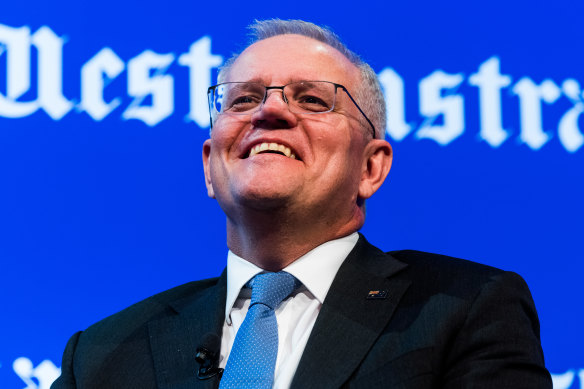
Scott Morrison’s GST deal was expected to cost just $8 billion over 8 years. It’s on track to reach $50 billion over a decade.Credit: James Brickwood
It also exposed the tension within the grants commission process that has been simmering since the 2010s.
As treasurer, Scott Morrison in 2018 – under huge political pressure in WA – overhauled a part of the process that directly fed more money across the Nullarbor.
With WA’s share of GST collapsing because it was earning so much from iron ore, Morrison struck a deal that put a floor under its share of the GST. Over time, this floor would be increased to something around what NSW and Victoria have long endured.
The federal government would tip in money to help bring WA’s share up to this new standard.
After pressure from Liberal senators in NSW and Victoria, who realised that their states could suffer big falls in their GST payments, the plan had a “no worse off” guarantee put on top of it – with that cash also to come from federal taxpayers.
As iron ore prices were expected to fall, the total cost of this floor and top-up system would be modest. Instead, iron ore prices have continued to climb.
When first announced, Morrison said the government would need to top up the GST pool by $600 million in 2021-22. By the time the proposal had gone through the parliamentary process, the expected cost had fallen to just $293 million.
But the actual cost reached almost $4.2 billion. In 2022-23, the federal budget took a $4.1 billion hit due to the deal. This financial year, the impost is expected to reach $4.9 billion with another $5.2 billion in 2024-25. The estimated total cost by the end of this decade is around $50 billion.
According to independent economist Chris Richardson, the cost of the deal will approach $400 for every taxpayer.
Morrison had commissioned a Productivity Commission report into the GST carve-up but his deal ignored most of its salient recommendations.
While backing the idea of ensuring all states and territories have the financial resources to care for their citizens, it warned there were major problems with the grants commission process that were hurting the economy.
It estimated if NSW or Victoria halved their stamp duty rates and replaced that lost revenue with a land tax, both would lose more than $330 million in GST revenues with other states rewarded for not improving their tax base.
It also noted the entire process was too complicated and obtuse for almost anyone to understand.
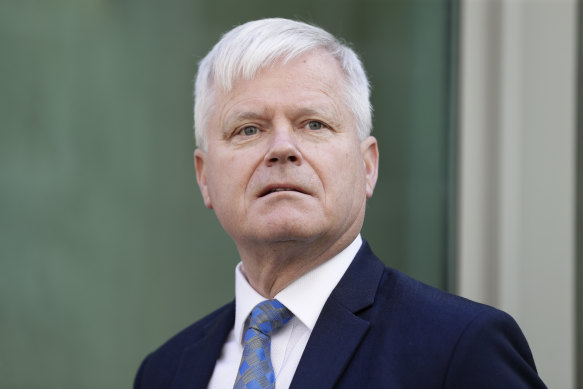
The GST deal will cost taxpayers, on average, $400 each by the end of the decade, according to Chris Richardson.Credit: Alex Ellinghausen
“The system is very poorly understood by the public and indeed by most within government — lending itself to a myriad of myths and confused accountability,” it found.
The report labelled a floor on a state’s GST share – exactly what Morrison put in place – as a “Band-Aid” that was “not well targeted to broader efficiency and fairness problems”.
Those efficiency and fairness problems are the ones exploding across the states and territories right now.
The Productivity Commission proposed a new allocation system. Part of the pot would be shared based on the ability that the states and territories had in the pre-GST world (1999) to provide reasonable services with remaining cash allocated on a per capita basis.
Richardson says a straight per-person carve-up of the GST, maybe accounting for a state’s Indigenous population, would be much simpler. The federal government, already topping up the GST system through the Morrison “fix”, could use this cash to then target particular problems from housing to Indigenous services.
This is similar to the proposal made this week by NSW Premier Chris Minns who backs the per capita idea. Under a per-person system, NSW would get an extra $3.8 billion this year alone. WA would also be miles ahead, up by $2.5 billion.
But it would devastate the Northern Territory. Its share of GST would collapse from $4.3 billion to just $850 million.
Another option is to allocate 90-95 per cent of the GST pool on a per-person basis and use what’s left over to target Indigenous populations and those living in remote or regional parts of the country that need extra support.
Federal Treasurer Jim Chalmers, who held a meeting with his state counterparts this week, noted that complaints about who gets what was “a story as old as the federation”. But he didn’t touch on the concerns about the grants commission process.
WA Treasurer Rita Saffioti, while enjoying her chance to rub the noses of NSW and Queensland into the problems of GST allocation, said the system did not work.
“We’ve always had a problem with the Commonwealth Grants Commission formula, it creates massive volatility, it’s hard to plan and budget,” she said.
Mookhey went biblical in his characterisation of the issue, saying the grants commission process would even trouble a prophet.
“I point out that it’s not like the current Moses came down in the Sermon on the Mount and said ‘thou shalt distribute GST through obscure processes of horizontal fiscal equalisation as determined by the Commonwealth Grants Commission’,” he told the NSW parliament this week.
If Coffs Harbour and its Big Banana move any further, Mookhey and every other state treasurer will be looking for divine intervention in the annual GST carve-up.
Cut through the noise of federal politics with news, views and expert analysis. Subscribers can sign up to our weekly Inside Politics newsletter.